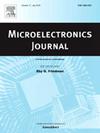Deformation behavior study of SAC305 solder joints under shear and tensile loading by crystal plasticity finite element method
IF 1.9
3区 工程技术
Q3 ENGINEERING, ELECTRICAL & ELECTRONIC
引用次数: 0
Abstract
Micro solder joints experience various loads during operation, and the failure of a single micro solder joint can impact the overall reliability of the entire microsystem. This study utilized the Crystal Plasticity Finite Element Method (CPFEM) to create a polycrystalline model that accurately represents the shape of solder joints. By calibrating the crystal plasticity characteristics of SAC305 material solder joints using macroscopic stress-strain curves, the model successfully simulates the deformation mechanisms of micro-solder joints under both tensile and shear loads. This paper highlights that equivalent plastic strain serves as a key indicator of solder joint fracture behavior, revealing that strain components have varying effects on cracking: shear strain was found to cause crack initiation, while normal strain was found to promote crack extension. Moreover, Grain boundary features and orientation lead to uneven plastic strain by affecting the slip system and the Schmidt factor, especially small Schmidt factor grains at triple grain boundary intersections are more susceptible to crack initiation. Additionally, the study found that solder joints exhibit more pronounced mechanical responses under tensile loading compared to shear loading. These insights offer valuable guidance for the design and manufacturing of micro-solder joints.
利用晶体塑性有限元法研究 SAC305 焊点在剪切和拉伸载荷下的变形行为
微型焊点在运行过程中会承受各种负载,单个微型焊点的失效会影响整个微型系统的整体可靠性。本研究利用晶体塑性有限元法(CPFEM)创建了一个能准确代表焊点形状的多晶模型。通过使用宏观应力-应变曲线校准 SAC305 材料焊点的晶体塑性特征,该模型成功模拟了微焊点在拉伸和剪切负载下的变形机制。本文强调等效塑性应变是焊点断裂行为的关键指标,揭示了应变成分对裂纹的不同影响:发现剪切应变会导致裂纹萌生,而法向应变会促进裂纹扩展。此外,晶界特征和取向会影响滑移系统和施密特因子,从而导致塑性应变不均匀,尤其是三晶界交叉处的小施密特因子晶粒更容易产生裂纹。此外,研究还发现,与剪切负载相比,焊点在拉伸负载下表现出更明显的机械响应。这些见解为微型焊点的设计和制造提供了宝贵的指导。
本文章由计算机程序翻译,如有差异,请以英文原文为准。
求助全文
约1分钟内获得全文
求助全文
来源期刊

Microelectronics Journal
工程技术-工程:电子与电气
CiteScore
4.00
自引率
27.30%
发文量
222
审稿时长
43 days
期刊介绍:
Published since 1969, the Microelectronics Journal is an international forum for the dissemination of research and applications of microelectronic systems, circuits, and emerging technologies. Papers published in the Microelectronics Journal have undergone peer review to ensure originality, relevance, and timeliness. The journal thus provides a worldwide, regular, and comprehensive update on microelectronic circuits and systems.
The Microelectronics Journal invites papers describing significant research and applications in all of the areas listed below. Comprehensive review/survey papers covering recent developments will also be considered. The Microelectronics Journal covers circuits and systems. This topic includes but is not limited to: Analog, digital, mixed, and RF circuits and related design methodologies; Logic, architectural, and system level synthesis; Testing, design for testability, built-in self-test; Area, power, and thermal analysis and design; Mixed-domain simulation and design; Embedded systems; Non-von Neumann computing and related technologies and circuits; Design and test of high complexity systems integration; SoC, NoC, SIP, and NIP design and test; 3-D integration design and analysis; Emerging device technologies and circuits, such as FinFETs, SETs, spintronics, SFQ, MTJ, etc.
Application aspects such as signal and image processing including circuits for cryptography, sensors, and actuators including sensor networks, reliability and quality issues, and economic models are also welcome.
 求助内容:
求助内容: 应助结果提醒方式:
应助结果提醒方式:


